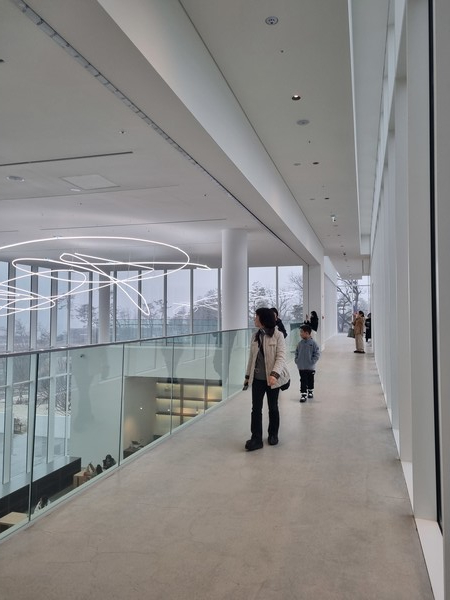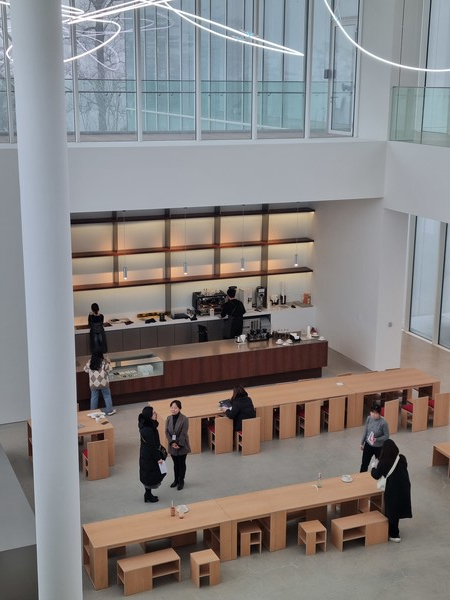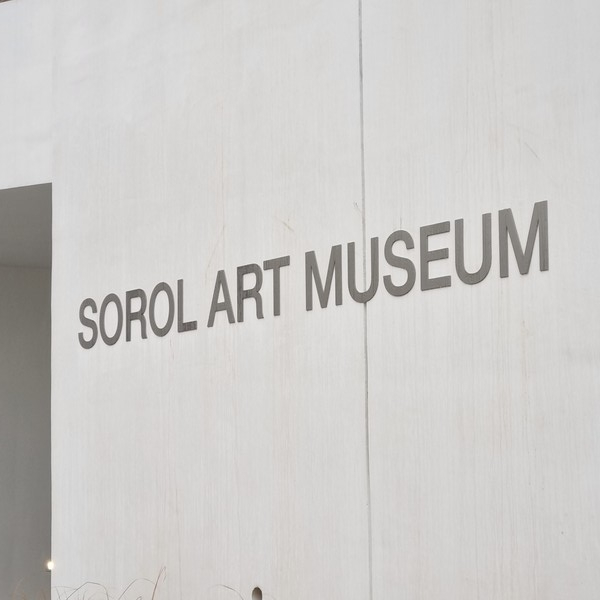I came across a promotional post while planning my trip to Gangneung. It mentioned the Sorol Museum of Art, which was set to open in February. I'm excited to explore this new art museum, especially given the increasing public interest in art, as seen with places like the Lium Museum of Art.
What is the Sorol Museum of Art
The etymology of "Sorol" originates from the fact that Gangneung, where the art museum is situated, was once referred to as such, signifying "a province abundant with pine trees." The museum was constructed with two above-ground stories and one basement floor, boasting a total floor area of 3,221.76 square meters.
Meier Partners, a group led by Richard Meyer, known for his architectural style characterized by white buildings that maximize natural light, spearheaded the design. According to the group's explanation, the Sorol Art Museum, designed by Meier Partners, showcases the architectural design and philosophy of the modern master architect, Richard Meier. It is expressed through the simplicity of form, materiality, and composition, creating a harmonious relationship with nature. It also aspires to create an open space where art, nature, and people converge. The Sorol Art Museum's vision, aiming to connect with the world through art, vividly portrays the interaction between the interior and exterior spaces.
The Sorol Museum presents two overarching visions. First, it aims to serve as "The Museum Connecting Korean Art and Global Art." This vision positions the museum as a platform to illuminate the historical context of Korean art by establishing connections with global art. Furthermore, the museum endeavors to uncover aesthetic links between Korean art and global art, aiming to promote the historical value of Korean art in the global art scene.
Second, the Sorol Museum aspires to be "An Art Museum Adding to the City’s Dignity." The museum aims to become a new cultural landmark in Gangneung. It is anticipated to offer opportunities for both citizens and tourists to enjoy nature and experience world-class art exhibitions.
Sorol Art Museum and Architecture
The architectural philosophy and characteristics presented by Meyer Partners were immediately evident upon entering the museum. First, the museum's architectural design considers the movements of its visitors. The long corridors and stairs leading to the exhibition halls create carefully planned transition spaces, allowing visitors to immerse themselves in the art. Upon entering the exhibition halls, there are deliberate changes in materials or lighting to draw visitors' attention to the artworks. According to the designers, the primary flow of movement within the interior space directs visitors outward, while the exhibition rooms are conceived as programmatically focused interiors. Similar to the Lyum Museum of Art, which gained popularity with its Cattelan exhibition last year, the Sorol Museum integrates external gardens and buildings rather than relying solely on indoor centerpiece architecture. This approach allows visitors to discover interesting aspects that blur the lines between the garden and the exhibition hall, offering more than just a passageway to the art museum.

Second, the museum features windows offering views of Gangneung. Along with the flow of humans, picture windows allow natural light to enter continuously. Visitors are not only immersed in the interior space but also experience the illusion of strolling through the garden visible beyond the windows. The glass material used for these windows possesses a unique quality that blurs the distinction between the interior and exterior environments. Consequently, I found myself naturally aware of the surroundings beyond the exhibition halls, which created a sense of spaciousness within the confined areas of the museum.

Third, light plays a pivotal role in the museum's design. Richard Meyer said, "White is all colors. It's everywhere. Everywhere you look". This emphasis on light earned him the monikers of a "white architect" and a "light architect." The Meyer group explains that the colors of the museum's buildings adapt to the external environment, whether it be a cloudy day, a sunny day, or a rainy day. This dynamic interplay of light and color ensures that visitors experience a unique and varied ambiance at the Sorol Art Museum every time they visit.
The Present-day of Sorol Museum of Art
On February 14, despite ongoing landscaping construction, the Sorol Museum of Art opened its doors to the public. This resulted in a lack of infrastructure to guide visitors beyond the museum's interior. This situation contrasts with the initial vision expressed in interviews, where it was stated that the building should seamlessly integrate with its natural surroundings. Furthermore, discrepancies were observed in the Kakao Taxi map, along with insufficient transportation infrastructure. These shortcomings were disappointing, especially considering the high expectations associated with the museum's association with Richard Meier.

Another issue arises from the perception that the exhibition hall area feels smaller compared to the movement pathways leading to it. Despite being named the Sorol Art Museum, it inadvertently projects the image of having a small exhibition space. The influence of the café, strategically positioned to offer views of nature through expansive windows in the lobby, seems to overshadow the impact of the exhibition halls. Consequently, visitors may perceive the museum as a venue where an exhibition is merely an adjunct to the café experience.

The fact that art galleries are also established in regions with relatively weak cultures and arts sectors is certainly commendable. It also has advantages, such as urban development, as it provides attractions and entertainment to visitors to the tourist city of Gangneung. However, art galleries should be a place to preserve, research, and enjoy art rather than merely becoming popular spots for photography. The current state of the Sorol Museum of Art suggests that consideration be given to this matter.

